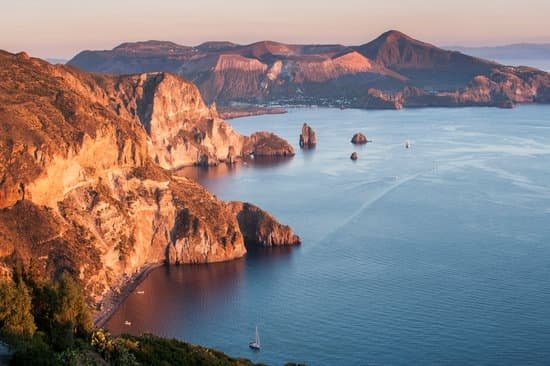Have you ever wondered how much time do you need to travel to Italy? The allure of Italy’s rich history, stunning landscapes, and delectable cuisine makes it a dream destination for many travelers. Whether you’re planning a short getaway or an extended vacation, understanding the travel time and logistics is crucial in making the most of your trip.
Italy’s diverse attractions, from the ancient ruins of Rome to the picturesque canals of Venice, offer countless opportunities for exploration and discovery. Deciding on the duration of your stay is the first step in planning your Italian adventure. This article will provide valuable insights into the factors that may influence your travel time and how to maximize your experience in Italy, regardless of how long you plan to stay.
In this article, we will delve into the logistics of travel by different modes of transportation, explore Italy’s top destinations, and discuss tips for maximizing your time in this beautiful country. Factors such as weather, peak tourist seasons, and cultural events will also be considered to help you make informed decisions about when and how long to visit Italy.
So whether you’re debating a short trip or an extended holiday, join us as we unravel the mystique of traveling to Italy.
Planning Your Trip
When planning a trip to Italy, one of the first decisions to make is the duration of your stay. Whether you’re considering a quick getaway or an extended vacation, the length of your visit will greatly impact your itinerary and overall experience. Here are some factors to consider when deciding how much time you need to travel to Italy:
- Must-see destinations: If you have specific cities or landmarks in mind that you absolutely must visit, this can help determine how long you’ll need in Italy. For example, if you want to explore Rome, Florence, and Venice, you may need at least 7-10 days.
- Your travel style: Consider how fast-paced or relaxed you prefer your travels to be. If you enjoy leisurely exploring each destination and soaking in the local culture, you may want to allocate more time for your trip.
- Time constraints: Of course, practical considerations such as work schedules and budget limitations will also play a role in determining the length of your trip. It’s important to find a balance between what is feasible and what will allow you to make the most of your time in Italy.
Before finalizing the duration of your stay in Italy, it’s essential to assess how much time do you need to travel to Italy from your home country. Depending on where you’re coming from, travel time can vary significantly:
- Flights from North America: If traveling from the United States or Canada, expect a flight duration of approximately 8-10 hours to major Italian cities like Rome or Milan.
- European travel: For those coming from other European countries, flight times can range from 1-4 hours depending on the departure city.
- Alternate transportation: Consider other modes of travel such as train or ferry if coming from nearby countries like France or Switzerland. While these options may take longer than flying, they can offer a unique and scenic journey.
Ultimately, taking into account these factors will help determine the ideal duration for your trip to Italy and ensure that you can make the most of your experience in this captivating destination.
The Logistics of Travel
Italy is a country filled with iconic landmarks, picturesque landscapes, and a rich cultural heritage that continues to draw millions of visitors each year. Planning your trip to Italy involves considering the logistics of travel, including how much time you need to reach this captivating destination. Understanding travel time by different modes of transportation can greatly impact your overall trip itinerary and experience.
When considering how much time you need to travel to Italy, one of the first factors to take into account is the mode of transportation you plan to use. Traveling by air is the fastest option, with direct flights from major cities in Europe taking approximately 2-3 hours, while flights from the United States typically range from 8-10 hours.
If traveling by train within Europe, it may take between 7-12 hours from neighboring countries such as France, Switzerland, or Austria. For those who prefer a more scenic route, ferry services are available from various Mediterranean countries with travel times ranging from a few hours to overnight journeys.
To further understand the logistics of travel to Italy, it’s essential to consider the specific destinations within the country that you plan on visiting. Factors such as proximity to major airports or transportation hubs and local infrastructure can influence travel time significantly. Additionally, some remote or smaller towns may require additional travel time by ground transportation after arriving at major cities or airports.
Planning your trip also involves factoring in potential layovers and transit times when using different modes of transportation on your journey to Italy. These additional elements play a crucial role in gauging how much time you need for your travels and optimizing your overall experience in this captivating country.
| Mode of Transportation | Approximate Travel Time |
|---|---|
| Airplane (from Europe) | 2-3 hours |
| Airplane (from US) | 8-10 hours |
| Train (within Europe) | 7-12 hours |
Exploring Italy’s Top Destinations
One of the most enticing aspects of visiting Italy is the opportunity to explore its top destinations, from the historic streets of Rome to the romantic canals of Venice. However, it’s essential to understand the factors that may influence your travel time as you plan your itinerary. The distance between destinations, as well as the mode of transportation you choose, can significantly impact how much time you need to allocate for traveling within Italy.
When considering travel time between Italy’s top destinations, it’s important to take into account the various modes of transportation available. For example, traveling by train in Italy is known for its efficiency and convenience. High-speed trains connect major cities such as Rome, Florence, and Milan, making it possible to reach these destinations in a matter of hours. Conversely, traveling by car may take longer due to traffic conditions and navigating unfamiliar roadways.
Additionally, while some of Italy’s top destinations are relatively close in proximity, others require more extensive travel time. For instance, if you’re planning to visit both Rome and Sicily during your trip, you’ll need to factor in additional travel time for this longer journey. It’s important to research the distances between destinations and consider how much time you’re willing to spend traveling in between in order to make the most of your visit to Italy.
| Mode of Transportation | Average Travel Time |
|---|---|
| Train | A few hours between major cities |
| Car | Varies depending on traffic and distance |
| Ferry/Boat | Several hours for longer journeys |
Tips for Maximizing Your Time in Italy
When traveling to Italy, regardless of the duration of your stay, it is essential to make the most out of your time. Whether you have a week or just a few days to spare, maximizing your experience in Italy involves careful planning and prioritizing the must-see destinations and experiences. Here are some tips for making the most of a short trip:
- Prioritize your must-see destinations: Before embarking on your trip, make a list of the top attractions and destinations you want to visit in Italy. Whether it’s the iconic landmarks like the Colosseum in Rome or the canals of Venice, prioritize these attractions to ensure you don’t miss out on them during your limited time in Italy.
- Plan efficient travel routes: When time is limited, it’s important to plan your travel routes efficiently. Consider using high-speed trains or domestic flights to quickly move between different cities and regions in Italy. This will help you maximize your time at each destination without spending too much time on transportation.
- Book skip-the-line tickets: To avoid wasting valuable time waiting in line at popular tourist attractions, consider booking skip-the-line tickets in advance. This will allow you to bypass long queues and spend more time exploring and enjoying the sites.
Factors to Consider
In addition to efficient planning and prioritizing, there are several factors that can influence how much time you need to travel around Italy. These include:
- Peak tourist seasons: During peak seasons, popular destinations in Italy can be crowded with tourists, leading to longer wait times and potentially impacting your overall travel time. Consider visiting during shoulder seasons or off-peak months for a more enjoyable experience with fewer crowds.
- Wea(http://thRomeothes during certain times of the year can also affect your travel plans. For example, extreme heat during summer months may limit the amount of time you can comfortably spend outdoors exploring cities and historic sites.
- Cultural events and festivals: Keep an eye on any major cultural events or festivals happening in your desired destinations. While these events can add unique experiences to your trip, they may also impact travel logistics and availability of accommodations.
Overall, making the most of a short trip to Italy requires careful planning, efficient use of transportation options, and consideration of various factors that can impact your travel experience. With strategic decision-making and a well-thought-out itinerary, even a brief visit to Italy can be filled with unforgettable experiences and memories.
Please let us know if there’s anything else we can assist you with regarding how much time do you need to travel to Italy.
Factors to Consider
When planning a trip to Italy, there are several factors to consider that can greatly influence your travel time. These factors include the weather, peak tourist seasons, and cultural events. Understanding how these elements can impact your trip will help you make the most of your time in Italy.
Weather
The weather in Italy varies depending on the region and the time of year. Northern Italy experiences a continental climate with hot summers and cold winters, while Southern Italy has a Mediterranean climate with mild, wet winters and hot, dry summers. Understanding the weather patterns will help you pack appropriately for your trip and plan activities that align with the seasonal conditions.
Peak Tourist Seasons
Italy is a popular tourist destination, especially during the summer months. Peak tourist seasons, which typically run from June to August, can significantly impact travel time due to crowded attractions, long lines, and higher prices for accommodations. Consider visiting during the shoulder seasons of spring or fall to avoid large crowds and take advantage of milder weather.
Cultural Events
Italy is known for its rich cultural heritage and vibrant arts scene. Throughout the year, various cultural events such as festivals, art fairs, and religious celebrations take place across the country. These events can attract tourists and impact travel time by increasing traffic and limiting access to certain areas. Researching cultural events before your trip can help you plan around them or decide to visit specifically for these unique experiences.
Considering these factors before traveling to Italy will allow you to make informed decisions about when to visit and how to maximize your time in this beautiful country. By understanding how weather, peak tourist seasons, and cultural events can influence travel time, you’ll be better equipped to create an itinerary that aligns with your interests and preferences.
The Travel Time Debate
When planning a trip to Italy, one of the key considerations that travelers face is the amount of time they have available for their stay. The question of whether it is worth the journey for a short stay in Italy is an important one, as it can impact the overall experience and enjoyment of the trip. This section will explore the debate surrounding travel time to Italy and whether a shorter stay can still be rewarding.
Value of Experiencing Italy
Italy’s rich history, stunning architecture, delicious cuisine, and vibrant culture make it a desirable destination for travelers around the world. However, with limited vacation days or budget constraints, many people may only have a short period of time to visit this beautiful country.
While some may argue that traveling to Italy for a short stay is not worth the time and effort due to long travel times and potential jet lag, others believe that even a brief visit can provide valuable experiences and memories.
The Role of Prioritization
For those considering a short stay in Italy, prioritizing activities and destinations becomes crucial. By carefully selecting the top attractions or cities to visit based on personal interests, travelers can make the most of their limited time in the country. Whether it’s exploring the historic landmarks of Rome, enjoying the romantic ambiance of Venice, or savoring authentic pasta dishes in Florence, making informed choices about what to see and do can enhance the overall travel experience.
Balancing Travel Time With Experience
Ultimately, whether traveling to Italy for a short stay is worth the journey depends on individual preferences and priorities. While longer stays allow for more comprehensive exploration and relaxation, shorter trips can still offer meaningful encounters with Italian culture and heritage. By carefully planning an itinerary that maximizes time at each destination, travelers can make the most of their visit to Italy regardless of its duration.
Conclusion
In conclusion, the question of how much time you need to travel to Italy ultimately depends on your personal preferences, interests, and availability. Whether you’re a history buff eager to explore ancient ruins, a foodie looking to indulge in Italian cuisine, or an art enthusiast wanting to visit world-renowned museums, Italy offers something for everyone.
The allure of Italy lies not just in its iconic landmarks and cultural treasures but also in its vibrant atmosphere, picturesque landscapes, and rich traditions.
As you plan your trip to Italy, it’s essential to consider the logistics of travel by different modes of transportation. The country’s top destinations may vary in travel time depending on whether you choose to take a train, drive, or fly between cities. Additionally, factors such as weather, peak tourist seasons, and cultural events can influence the overall experience of your journey.
While some travelers may argue that a short stay in Italy is not worth the journey due to travel time constraints, others believe that it is possible to make the most of a brief visit by carefully planning and prioritizing activities. With proper itinerary management and smart decision-making, even a short trip can be incredibly rewarding and memorable.
Embracing the unique experience of traveling to Italy means savoring every moment and seizing the opportunity to immerse yourself in the country’s rich history, captivating beauty, and timeless charm. Ultimately, regardless of how much time you have available for your trip to Italy, making the most of your experience is what truly matters.
Frequently Asked Questions
How Many Days Is Ideal to Visit Italy?
The ideal number of days to visit Italy really depends on the individual traveler and their interests. However, a good starting point is at least 10-14 days to fully explore the major cities and experience the different regions.
How Far in Advance Should I Plan a Trip to Italy?
Planning a trip to Italy should ideally be done at least 6-12 months in advance, especially if you want to visit during peak tourist season. This allows time to secure accommodations, book popular attractions, and find the best deals on flights.
Is 7 Days in Italy Enough?
While 7 days in Italy can provide a taste of the country, it may not be enough time to fully immerse yourself in all that Italy has to offer. It could be sufficient for exploring one or two cities, but for a more comprehensive experience, consider extending your stay to at least 10 days.

I’m a passionate traveler, writer, and Italophile. My fascination with Italy’s history, art, and culture has led me on countless adventures across the Italian landscape. Through “I Live Italy,” I share my love for this extraordinary country and aims to inspire others to explore its boundless beauty.




